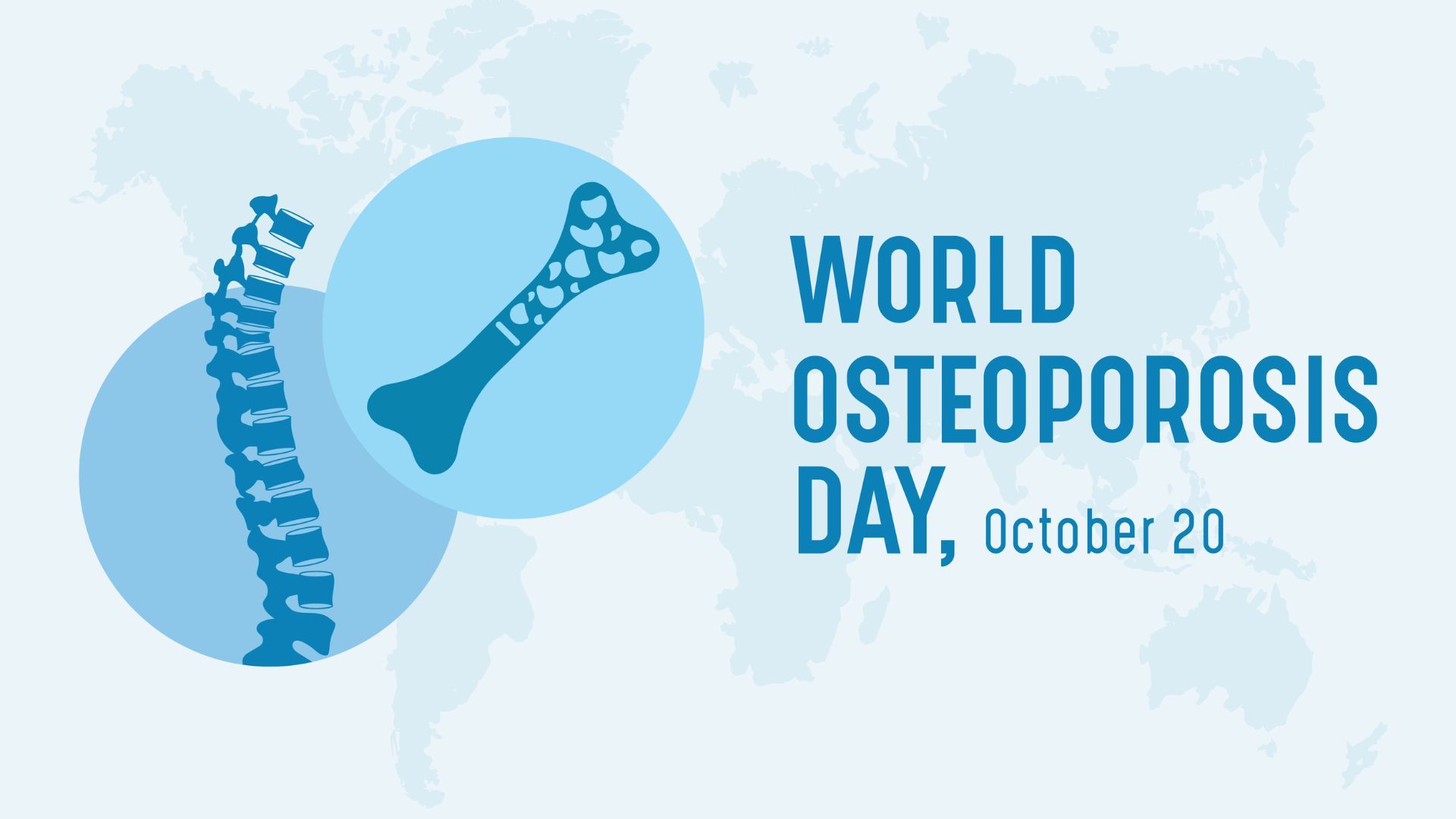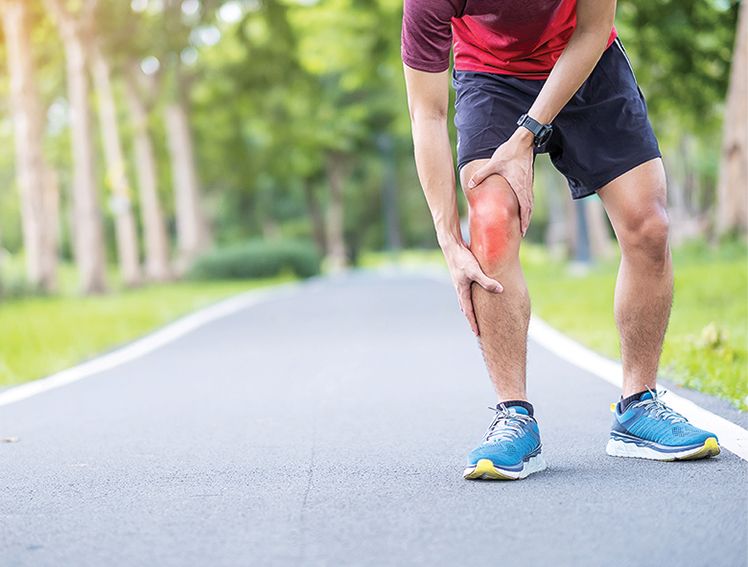
World Osteoporosis Day 2025: Why Ignoring Osteoporosis Care Is a Global Health Risk
Introduction
World Osteoporosis Day 2025 is marked globally on October 20 to bring awareness about bone health. The theme this year, "It's Unacceptable", emphasizes that a disease that is easily avoidable, yet many people still have a deteriorated life quality because of it. The theme sheds light on the urgent need to take osteoporosis seriously.
Osteoporosis weakens bones, often without any visible symptoms, until a sudden fracture occurs.[1] For millions of people worldwide, this silent disease can turn a small slip or fall into a life-changing injury. That's why experts say it's unacceptable to ignore osteoporosis care any longer.
Understanding Osteoporosis: A Silent but Serious Disease
Osteoporosis is a condition where bones lose density and strength. This makes them fragile and more likely to break.
It is called the "silent disease" because most people don't realise they have it until a fracture happens.
Fragility fractures can occur in the hip, spine, wrist, or shoulder.
These fractures can result in long hospital stays, loss of independence, and reduced quality of life.
To make it easier to understand, think of bones like a tree. When the inside becomes hollow, it may look fine outside, but it can snap easily.
Who is at Risk of Developing Osteoporosis?
Anyone can develop osteoporosis, but some people are more at risk than others. Major risk factors include:[2]
Age: Bone strength reduces after 50.
Gender: Women, especially after menopause, are more affected.
Family History: If parents had fractures, the risk is higher.
Lifestyle: Lack of exercise, smoking, or drinking alcohol.
Medical Conditions: Long-term use of steroids, hormonal disorders, or very low body weight.
How Is Osteoporosis Diagnosed?
Doctors use different methods to check bone health. The most common is the DEXA (Dual-Energy X-ray Absorptiometry) scan.
DEXA Scan: Measures bone density and compares it to healthy bone strength.
Blood Tests: Check calcium and vitamin D levels.
X-rays: May reveal fractures caused by weak bones.
Early diagnosis helps prevent fractures and ensures timely treatment.
Myths vs. Facts about Osteoporosis
Myth 1: Osteoporosis only affects women.
Fact: Osteoporosis is more common in women than men, but men are also at risk, especially after the age of 50.[3]
Myth 2: If you don't feel pain, your bones are healthy.
Fact: Osteoporosis does not have any prominent signs. It can go undiagnosed until you get a fracture.
Myth 3: Osteoporosis is just part of aging.
Fact: While aging increases risk, lifestyle choices and early care can slow its effects and improve your quality of life.
Myth 4: Once diagnosed, nothing can be done.
Fact: You can follow a proper diet, exercise regularly, and increase vitamin intake to improve bone strength.
Modern Approaches to Bone Health Care
Bone health care today combines preventive steps with medical innovation. Along with nutrition, exercise, and early screening, advanced treatments are also available when osteoporosis leads to fractures. Hospitals increasingly rely on orthopaedic implants and joint replacement systems that are specially designed to support fragile bones. We at Meril contribute to this progress by developing trauma implants, joint reconstruction solutions, and biomaterials that help patients dealing with orthopaedic complications due to osteoporosis.
Here are some of our solutions that help restore mobility and stability:
Trauma Fixation Systems: Locking plates, screws, and femoral nails designed to provide strong support for fragile bones. Meril offers different options like the KET™ Plate & Screws, Armar™ Plate & Screw Trauma Fixation Range, and KET SS Trochanteric Femoral and Proximal Fixation Femoral Nail, designed to provide strong support for fragile bones.
Joint Replacement Systems: Meril provides total knee replacement systems and hip replacement systems, crafted with durable, biocompatible materials to help patients regain movement and confidence.
Surgeon Training: Through Meril Academy, doctors learn modern techniques to manage osteoporotic fractures.
Innovations in Diagnosis and Treatment for Osteoporosis
Osteoporosis treatment today focuses on preventing fractures and restoring mobility. Alongside medicines and nutrition, modern solutions are making a real difference.
How to Prevent Osteoporosis?
Eating a calcium-rich diet that includes dairy, leafy greens, and nuts.
Getting enough vitamin D through sunlight or supplements.
Staying active with weight-bearing exercises like walking, dancing, or light jogging.
Avoiding smoking, chewing tobacco and excessive alcohol consumption.
Going for regular bone density check-ups after the age of 50.
What are the Treatment Options?
Before Fracture:
Medicines that slow down bone loss or support new bone growth.
Physiotherapy and rehabilitation to rebuild strength and balance.
After a Fracture:
Advanced implants like locking plates, nails, and screws are designed for fragile bones, but this is after any damage.
Hip and knee replacements that restore movement after any unfortunate incidents. With options like FREEDOM® Total Knee System, OPULENT BIONIK GOLD KNEE and LATITUD™ Hip Replacement System available, these can restore function in the knees and hips to improve the quality of life.
Why "It's Unacceptable" to Neglect Bone Health
As you grow older and wiser, you should learn to stop neglecting bone health, as it can lead to lowering your quality of life.
You will be prone to frequent fractures.
If ever hospitalised for any fractures, it can prolong your hospital stays.
As you age, due to low bone density, you may become weaker and more dependent on others for daily activities.
Emotional stress and loss of confidence
Osteoporosis is not just a medical issue; it is a global health challenge. With millions at risk, ignoring it can no longer be acceptable.
Taking Steps towards a Fracture-Free Future
The good news is that osteoporosis is preventable and manageable.
Steps for stronger bones:
Eat calcium and vitamin D-rich foods.
Stay active with walking, yoga, and strength training.
Go for regular health check-ups, especially after 50.
Ask your doctor about screening and treatment options.
On this World Osteoporosis Day 2025, let's commit to stronger bones and a healthier future. Because when bones are strong, life is strong too.
FAQs
Q1. What are the symptoms of osteoporosis pain?
There are no clear symptoms until a fracture happens.
Q2. How can osteoporosis be improved?
Eat a balanced diet, exercise regularly, take supplements if needed, and follow your doctor's treatment plan.
Q3. Can Vitamin D reverse osteoporosis?
Vitamin D cannot reverse it, but it helps absorb calcium, which strengthens bones.
Q4. What is the best type of exercise for osteoporosis?
Weight-bearing exercises like walking, light jogging, or dancing, along with strength training, are best.
Q5. What is the difference between osteopenia and osteoporosis?
Osteopenia is low bone density, but not as severe as osteoporosis. Osteoporosis is advanced and carries a higher fracture risk.



